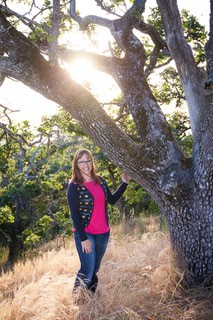Congress 2019 guest blog from Mitacs
“I […] knew lots of scientists and organizations saying things need to be done, but no one seemed to be listening,” she says. She wondered why some social media messages get picked up while others languished. “I was also concerned about vulnerable Garry Oak habitats in BC.”
Garry Oak ecosystems are home to more than just the gnarly trees unique to the west coast. These meadows and woodlands harbour more plant species than any other coastal ecosystem, including wildflowers such as camas, spring-gold, and buttercups. Endangered creatures like the western bluebird, Roosevelt elk, and sharp-tailed snake also thrive in these areas. Currently, less than five per cent of the province’s original Garry Oak habitat remains.
“I live near a protected Garry Oak ecosystem, and I bring my daughters there, so I know how important these areas are,” says Alina. “I wanted to get the message about conservation out, and I came up with a proposal to help GOERT create an effective social media plan.”
Learn more about Accelerate internships here
“We’d tried some social media before,” says GOERT chair Val Schaeffer, “but were unsuccessful — we didn’t have Alina’s expertise.”
Alina researched ways to increase public awareness of the importance of protecting Garry Oak habitats. “The public knows there’s a problem,” she says. “They just don’t know why they should care. We have to explain how the loss of this habitat affects them personally. I also discovered a person’s perception of conservation messages changes depending on their background, and the messages need to be customized to specific social media platforms.”
“Alina has made some good recommendations,” says Val. “The Mitacs internship has been a fantastic program because it produced tangible results for us.”
Since her internship, Alina has continued to collaborate with GOERT. Once the social media plan is finalized, she’ll be part of the team that implements it. “This experience got me out of the world of theory and into applied research,” she says. “It’s also been a good marriage of my biology background with my new communications focus. I’ve learned how to be a ‘scientific communicator’ — it’s made me better at explaining what I do, and at having conversations with people about environmental issues.”
Read more inspiring stories at mitacs.ca/impact
About Mitacs
Mitacs delivers research and training programs to students, postdocs, and faculty in all disciplines. We help build partnerships that support research and innovation in Canada and around the world. Visit the Mitacs booth in the Congress Expo Event Space to find out more.

